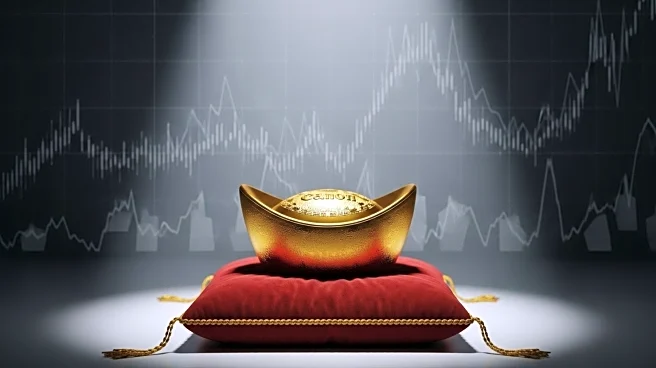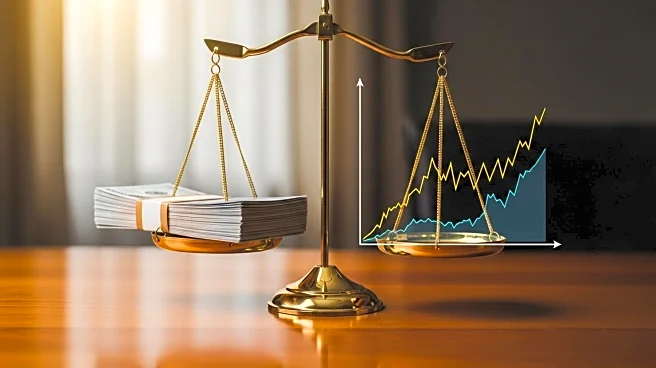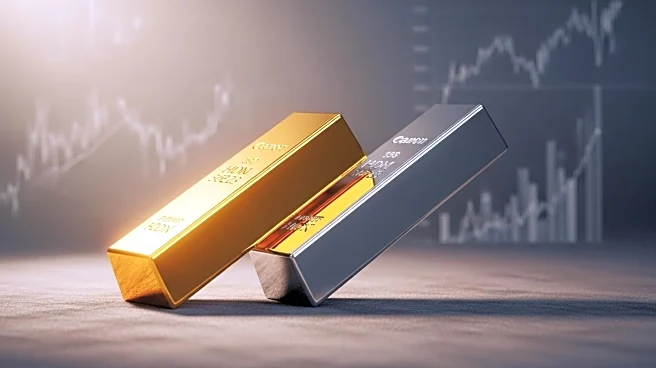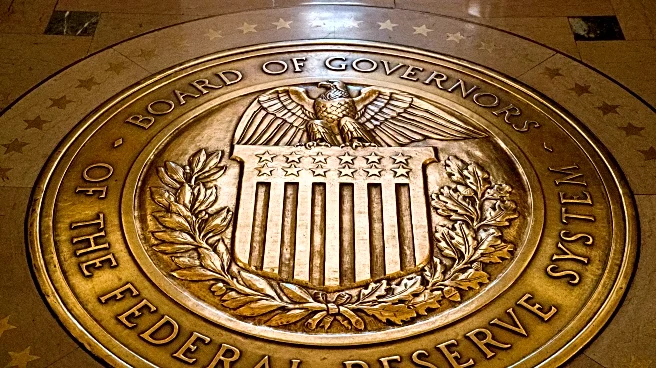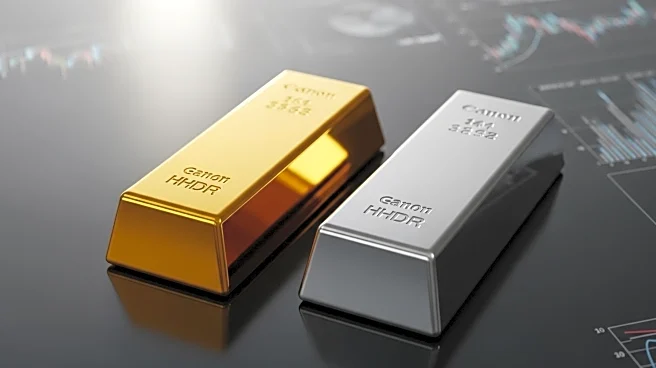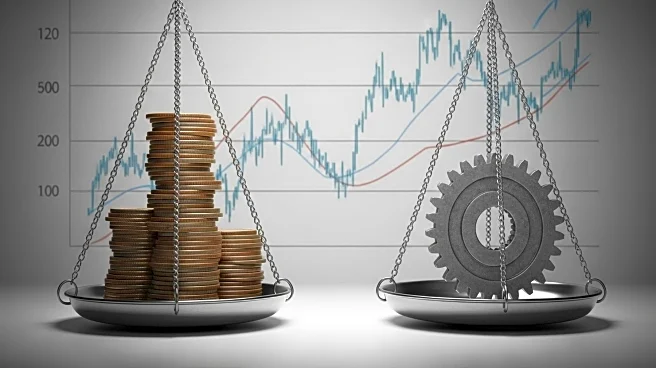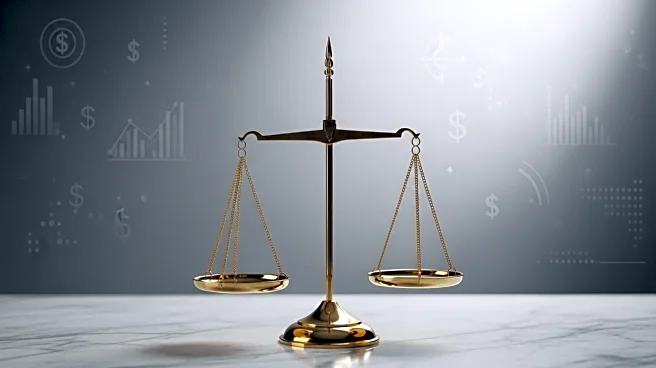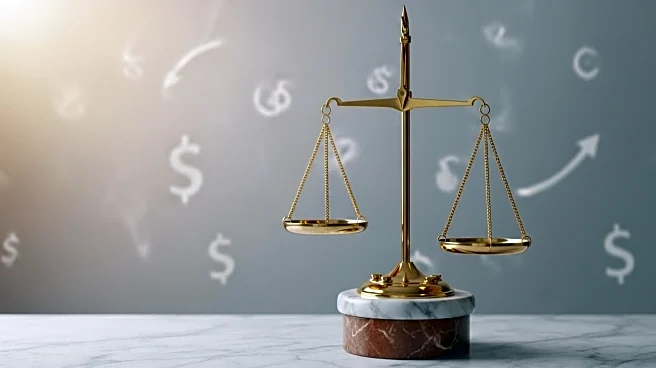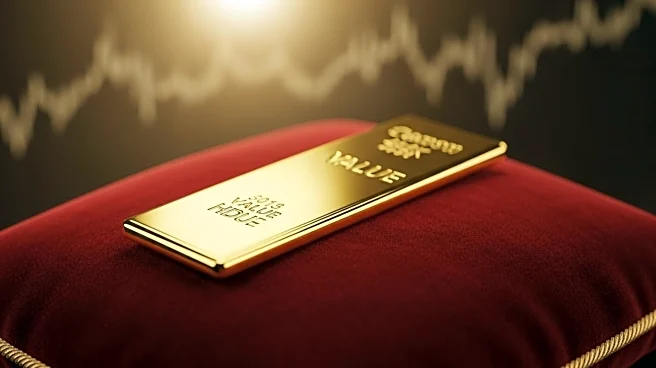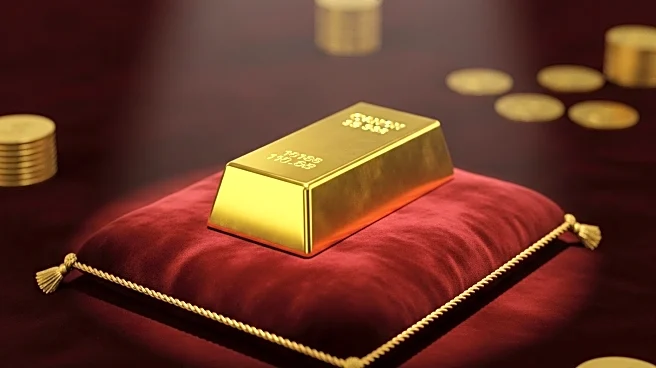What is the story about?
What's Happening?
Gold has experienced a significant rise, reaching a record high of $3,724.90 per troy ounce, marking a 39% increase year-to-date. This surge is attributed to economic uncertainties, including tariffs, geopolitical tensions, and a shaky labor market. Inflation remains above the Federal Reserve's target, with the Consumer Price Index showing a 2.9% annual growth. Concerns about stagflation, characterized by high inflation, unemployment, and slow growth, are contributing to gold's appeal. Additionally, anticipated interest rate cuts by the Federal Reserve could further enhance gold's attractiveness as an investment.
Why It's Important?
The rise in gold prices reflects broader economic concerns, particularly stagflation, which poses challenges for economic stability. Gold's performance during uncertain times highlights its role as a safe-haven asset. Lower interest rates make gold more appealing compared to interest-bearing assets like government bonds. This trend could impact investment strategies and economic policies, influencing decisions by investors and policymakers. The potential rate cuts by the Federal Reserve could further drive gold prices, affecting financial markets and economic forecasts.
What's Next?
The Federal Reserve is expected to discuss interest rate adjustments at the upcoming Federal Open Market Committee meeting. A rate cut could further boost gold's appeal, potentially leading to increased investment in the precious metal. Investors and analysts will closely monitor the Fed's decisions and economic indicators to assess future trends in gold prices and economic conditions. The outcome of the meeting could have significant implications for financial markets and economic strategies.
AI Generated Content
Do you find this article useful?
